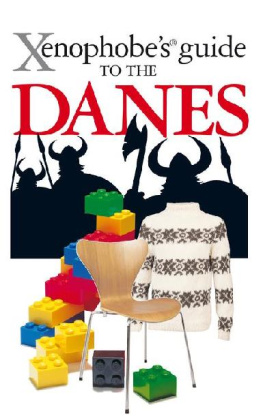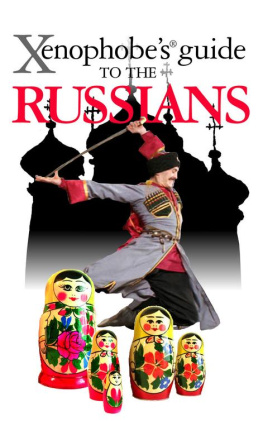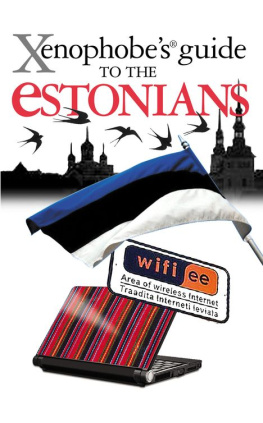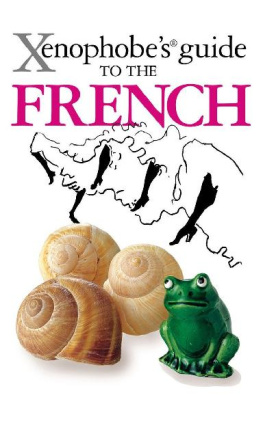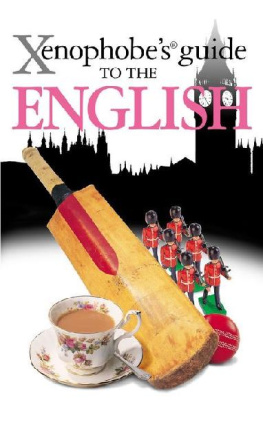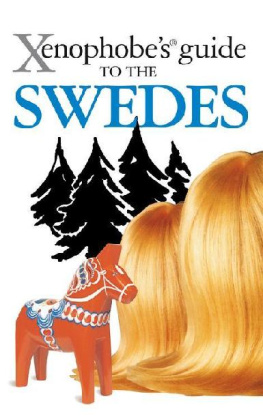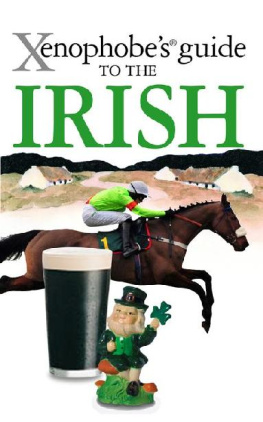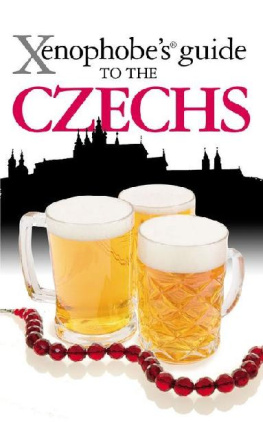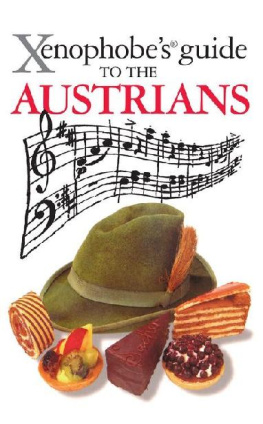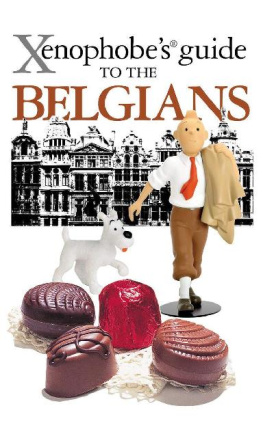Helen Dyrbye - The Xenophobes Guide to the Danes
Here you can read online Helen Dyrbye - The Xenophobes Guide to the Danes full text of the book (entire story) in english for free. Download pdf and epub, get meaning, cover and reviews about this ebook. City: London, year: 2008, publisher: Oval Projects, genre: Home and family. Description of the work, (preface) as well as reviews are available. Best literature library LitArk.com created for fans of good reading and offers a wide selection of genres:
Romance novel
Science fiction
Adventure
Detective
Science
History
Home and family
Prose
Art
Politics
Computer
Non-fiction
Religion
Business
Children
Humor
Choose a favorite category and find really read worthwhile books. Enjoy immersion in the world of imagination, feel the emotions of the characters or learn something new for yourself, make an fascinating discovery.
- Book:The Xenophobes Guide to the Danes
- Author:
- Publisher:Oval Projects
- Genre:
- Year:2008
- City:London
- Rating:4 / 5
- Favourites:Add to favourites
- Your mark:
- 80
- 1
- 2
- 3
- 4
- 5
The Xenophobes Guide to the Danes: summary, description and annotation
We offer to read an annotation, description, summary or preface (depends on what the author of the book "The Xenophobes Guide to the Danes" wrote himself). If you haven't found the necessary information about the book — write in the comments, we will try to find it.
The Xenophobes Guide to the Danes — read online for free the complete book (whole text) full work
Below is the text of the book, divided by pages. System saving the place of the last page read, allows you to conveniently read the book "The Xenophobes Guide to the Danes" online for free, without having to search again every time where you left off. Put a bookmark, and you can go to the page where you finished reading at any time.
Font size:
Interval:
Bookmark:


The Danish population is 5.5 million, compared with 9.4 million Swedes who like Denmark for duty-free beer, and 82 million Germans who like Denmark for sun, sand and sea holidays.
Denmark is made up of 406 islands. It is a little larger than The Netherlands and could fit into Sweden ten times (and has tried at various times in history). The state of Denmark includes Greenland which is nearly four times the size of France but is not much use since 95% of it is covered in ice.
Apart from Copenhagen, no town has over 255,000 inhabitants and few have more than 50,000, unless the weather is very sunny and the Swedes very thirsty.
Denmark is a Scandinavian country, but not a very Scandinavian country. It has no midnight sun, no ski-jumps and no reindeer.
Outsiders tend to think of the Scandinavians as all the same, but they are not. The Norwegians are like the Scots; a hardy mountain folk. Swedes are the Prussians of the North; they stand up straight, dress alike and do what they are told. The Danes are more relaxed and easy-going. They sit down: it increases the chances of everyone seeing eye to eye.
The differences between these three peoples are best understood by considering the most famous writer of each country: Hans Christian Andersen for Denmark, Ibsen for Norway and Strindberg for Sweden.
Denmark is a Scandinavian country, but not a very Scandinavian country.
They are also reflected in attitudes to alcohol. In Denmark alcohol is freely available and relatively cheap. In Norway and Sweden alcohol is pricey and sales are under state control; a licence is needed not just to sell alcohol, but to buy it. This is good news for Copenhagen bars, which do a lively trade selling Danish firewater to thirsty Swedes and Norwegians on the razzle. No Swedish politician would ever be seen with a beer in his hand, but Danes are happy to see Danish politicians not only holding a beer, but drinking it although they baulk at footing the bill if its done outside office hours.
The Danes think of their neighbours as they would members of their family. Denmark is the baby sister whose idea of fun occasionally shocks.
The Danes think of their neighbours as they would members of their family. Denmark is the baby sister whose idea of fun occasionally shocks. The other Scandinavian countries are of course brothers. Finland is the one who is moody, unpredictable and possibly autistic. Norway is accepted as equal, perhaps even slightly envied for its oil wealth, natural beauty and exclusivity. Sweden is the boring older brother who thinks he knows best, is well dressed, well behaved and infuriatingly politically correct. However, Sweden offers lower tax, cheaper housing and luxury cars at giveaway prices compared with Denmark. Younger Danes have a sneaking admiration for the Swedes that they try to keep hidden.
The Swedish countryside is much admired and many Danes holiday in Sweden, but they feel somehow that Swedes dont deserve their wonderful surroundings. In Danish eyes Sweden is a cultural and human desert. There are rules about everything and you need a second mortgage to stand a round of drinks. Both countries have fines for dogs fouling the pavement, but in Sweden you actually get caught.
In the spirit of New Europe, Danes try very hard to like the Germans, but its hard work not to bite the hand that feeds them. Danes are convinced that the Germans are trying to take over Europe, cunningly disguised as tourists. They are intensely concerned that the plse tyskere (sausage Germans) will buy Jutland as soon as they get the chance and turn it into a windsurfing centre. Germans regularly fall asleep on their sailboards and have to be fished out of the North Sea halfway to Grimsby by the long-suffering Danish air-sea rescue service. All the summer houses are rented out to Germans, there are even German editions of local newspapers, and L EGOLAND , complete with a part of the Rhein Valley, is filled to the brim with Germans determined to enjoy themselves.
However, Germans are more acceptable if they buy plenty of Danish products. They are also partially forgiven for being German if they employ Danes in their businesses.
The Danes attribute their success to having all the virtues of their neighbours and none of their vices.
Inflation in Denmark is negligible, the economy is strong and technical development is world-class not bad for a country with a population roughly that of South London. The Danes attribute this success to their having all the virtues of their neighbours and none of their vices. They share the Germans methodical attention to detail and the Swedes egalitarianism and level-headedness. Gone is the plodding, constipated German imagination (or lack of it) and the dreary Swedish party-pooping pedantry. According to the Danes, whats left is a unique mixture of conscientiousness and informality that makes Danish overseas travellers breathe a sigh of relief when they cross the border home.
Danes who cannot fly flags out of doors have mini flagpoles as part of their table decoration for high days and holidays.
The Danes fly their flag with pride. The red and white Dannebrog against a clear blue sky is enough to bring a tear to their eyes. Rural inhabitants invariably have their own flag pole set squarely in the middle of their garden. Town dwellers rent an allotment and plant a pole along with their broad-leaved parsley. Both have lists of dates magneted to the fridge giving details of when to let rip public holidays, festivals, state visits, their own birthdays, anniversaries, etc., and town ftes when flags line the main street to remind everyone that the local shops stay open late that night.
Danes who cannot fly flags out of doors have mini flagpoles as part of their table decoration for high days and holidays, and even fly the flag on cocktail sticks. Shops and advertisers use the flag to promote their goods, and Danish football fans were the first to paint their faces with their national flag.
There is nothing threatening about this nationalism . As a nation, the Danes have not been a threat to anyone for hundreds of years.
The rugged individualism of American society is at odds with the importance which Danes attach to social cohesion.
The rugged individualism of American society is at odds with the importance which Danes attach to social cohesion. Americans are seen as an essential ally and the scientific research they generate is admired, but if a situation is approaching unacceptable levels, for example, Danish children are being fed too much fast food, a Danish academic of some description will appear on the news proclaiming that Denmark is hurtling towards an amerikansk tilstand (an American state of affairs).
The British are regarded as class-ridden with Dickensian social values, a view supported by costume dramas shown on television. This does not prevent Danes from showing great enthusiasm for the English language, English pop music and league football. Though deeply censorious of the Germans and pitying of the Swedes, the Danes are angels of patience and tolerance when it comes to the English. The drunken buffoonery of English football fans is met with smiles of understanding. The sight of an English football fan halfway up a lamppost swilling beer from the anus of an inflatable rubber pig caused little more than some shaking of heads. A German or a Swede would have been arrested and heavily fined.
Font size:
Interval:
Bookmark:
Similar books «The Xenophobes Guide to the Danes»
Look at similar books to The Xenophobes Guide to the Danes. We have selected literature similar in name and meaning in the hope of providing readers with more options to find new, interesting, not yet read works.
Discussion, reviews of the book The Xenophobes Guide to the Danes and just readers' own opinions. Leave your comments, write what you think about the work, its meaning or the main characters. Specify what exactly you liked and what you didn't like, and why you think so.

